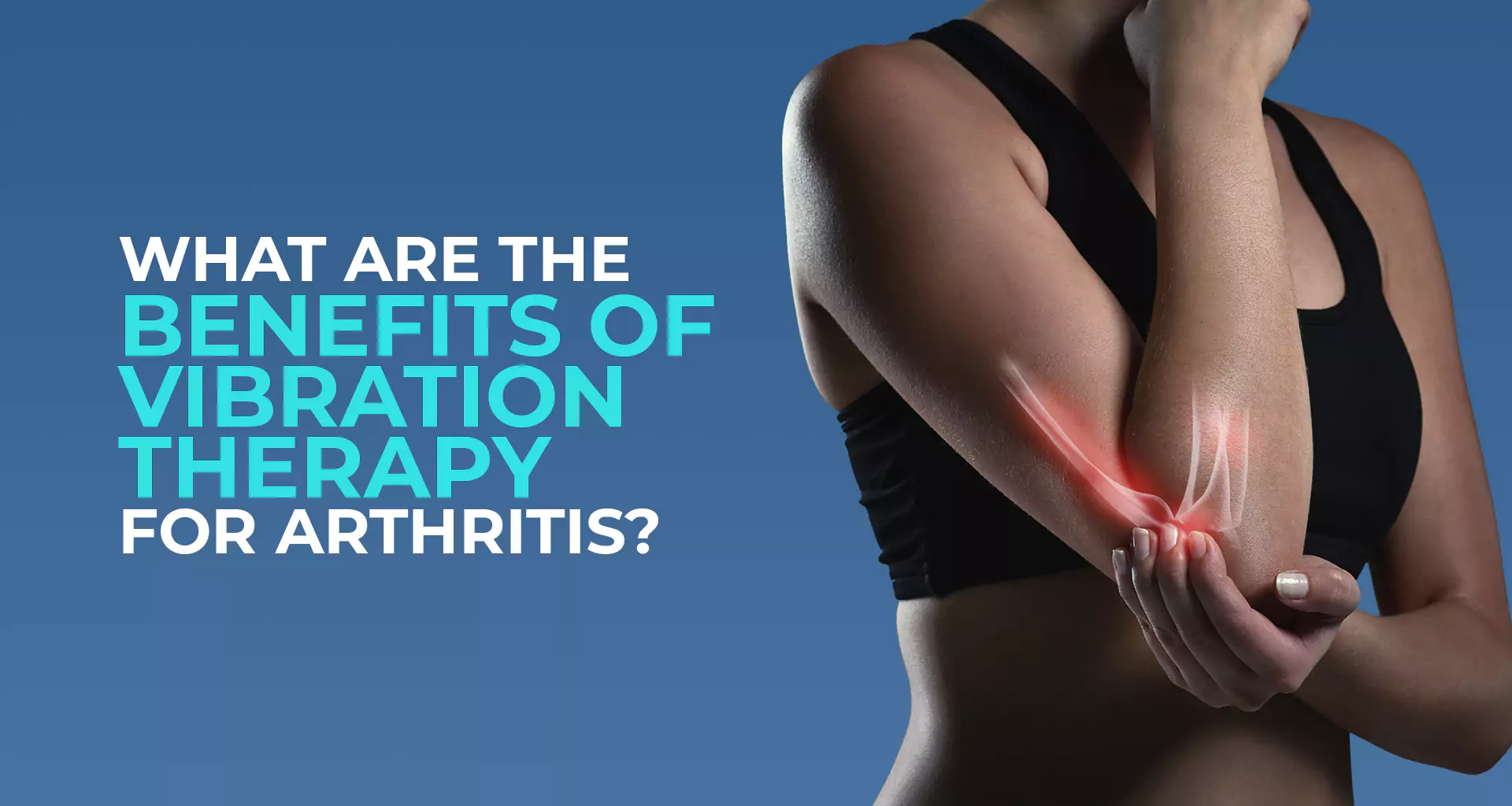
Several studies have shown that using a Vibration Plate for arthritis is a safe and beneficial complementary treatment.
These studies also show that consistency is essential.
For example, regular Whole Body Vibration sessions (10–30 Hz, 3–4 times a week for 8–12 weeks) have been shown to reduce knee pain and improve physical function.
Other benefits of Vibration Therapy beyond pain reduction include:
Living with arthritis can be difficult.
While medication and physiotherapy remain primary modes of treatment, many people are now turning to complementary options for support and recovery, one of them being Vibration Therapy.
As mentioned earlier, Vibration Therapy can reduce pain, improve joint function, and boost circulation without adding stress to the already inflamed joints.
But wait, does it really work? And is it safe for people with arthritis? The short answer is yes.
In this article we’ll walk you through how WBV works for arthritis (plus the science to back it up), the key benefits, and the top devices worth trying.
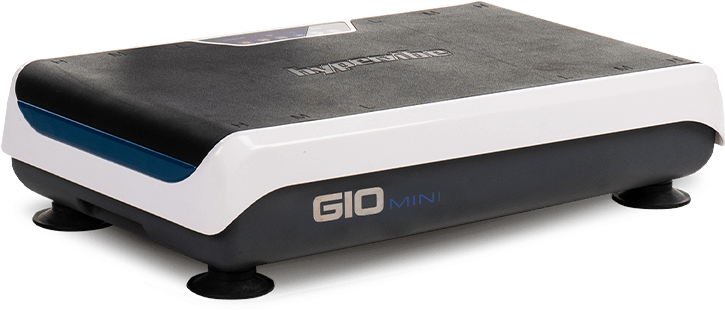




Arthritis is a disease that causes damage to your joints.
Your joints are the areas in your body where bones meet.
]While we refer to it as one disease, it is actually a medical term that covers more than 100 conditions.
These conditions cause inflammation, pain, stiffness, and swelling in joints and other connective tissues.
Arthritis comes in three common forms:
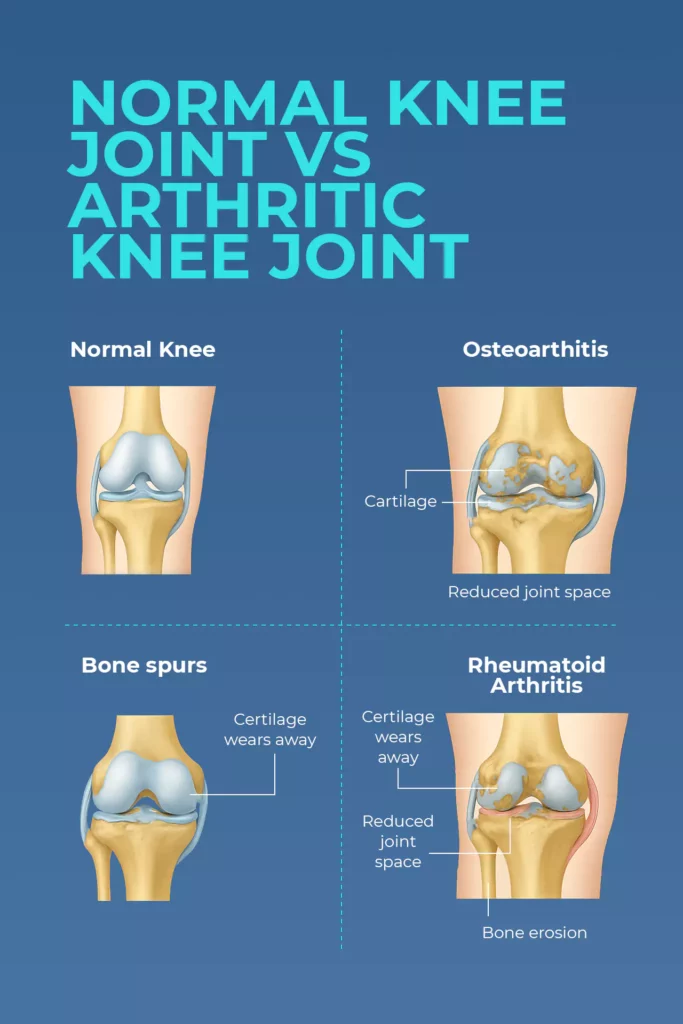
Infographic comparing a normal knee joint with osteoarthritis and rheumatoid arthritis, showing cartilage loss, reduced joint space, bone spurs, and bone erosion.
Beyond the physical sensation, Vibration Therapy works on a deeper, cellular level, particularly for individuals with arthritis.
To gain therapeutic benefits, the vibrations must stimulate your muscles, improve circulation, and reduce inflammatory responses. Here’s a breakdown:
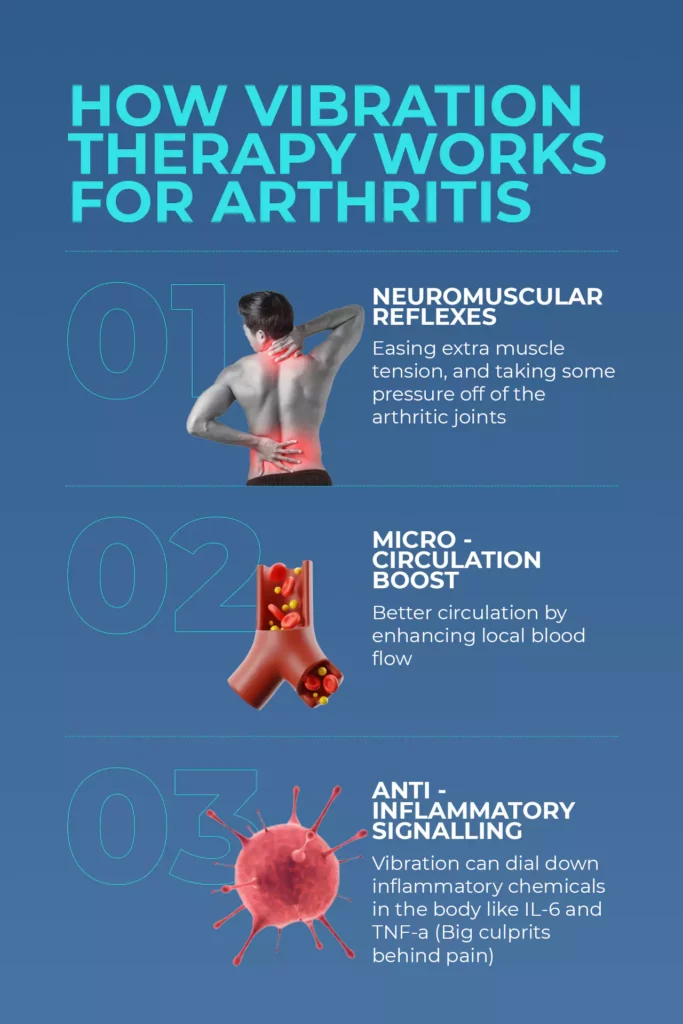
Infographic showing how vibration therapy works for arthritis
When you stand or exercise on a Vibration Platform, the vibration causes your muscles to contract involuntarily.
This is called Ia-afferent activation.
The vibration wakes up small nerve endings (spindles) in your muscles.
The plate’s stimulation lowers a protective reflex called co-contraction, which occurs when muscles on both sides of a joint contract simultaneously.
Vibration Therapy helps ease that extra muscle tension, allowing your joints to move more freely and comfortably, thereby taking some of the pressure off arthritic joints.
Quick question: what actually makes cartilage healthy?
Well, an important factor is good nutrient delivery, which comes through the surrounding joint fluid and blood flow, since it has no blood vessels of its own.
Vibration Therapy enhances local blood flow, stimulating the release of nitric oxide—a molecule that helps widen blood vessels.
Better circulation enables your joints to get more of the nutrients and oxygen they need. That’s key to keeping tissues healthy and helping them repair.
Research shows that vibration can reduce certain inflammatory chemicals in the body—like IL-6 and TNF-α—that are big culprits behind pain in rheumatoid arthritis:
Here’s a quick overview of some studies and trials on Vibration Therapy use for arthritis:
|
Study (Year) |
Arthritis Type |
Protocol |
Key Result |
|
Knee OA |
WBV + conventional rehabilitation vs. rehabilitation only |
Only participants who received WBV plus rehabilitation experienced greater pain reduction and improved knee strength. |
|
|
Knee OA |
Low-magnitude, variable-frequency WBV |
Safe & effective; best for grade II OA |
|
|
Mixed (OA, RA, Knee-specific) |
WBV + Home-based Exercise vs. PT + Home-based Exercise |
The WBV group showed better functional improvements and reported less pain than the PT group. |
|
|
End-stage Knee OA |
Exercise Therapy vs. Exercise + WBV |
The combined program led to increase KOOS scores (better pain control, improved function, and quality of life) and less pain. reduction than exercise alone. |
|
|
Knee OA (Female Students) |
WBV + Home-based Exercise |
Participants experienced improvements in gait (reduced toe-in angle) and a significant decrease in WOMAC scores, reflecting less pain, less stiffness, and better joint function. |
It may seem counterintuitive to use a vibrating machine on sensitive joints, right?
However, it is an impressive therapy for managing arthritis.
It boosts muscle strength, balance, and body awareness, giving you a solid foundation that makes regular exercises easier and more effective.
Now, we won’t fail to address the concern of whether Vibration Plates are bad for joints.
The myth that Vibration Plates harm joints stems from the high-frequency, high-amplitude vibrations found in industrial machinery.
However, clinical and therapeutic WBV are safe.
However, it is important to start with low settings.
Prolonged exposure to occupational vibration can be harmful, but most consumer-grade vibration machines are designed to be used for shorter periods and operate in a range shown to be safe for therapy.
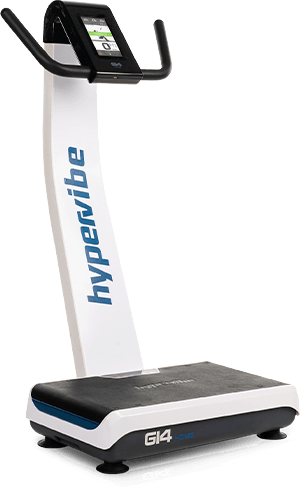




If you have RA, a Vibration Plate can be a good fit only if you:
Here’s a step-by-step routine you can try to get the most out of your vibration workout:
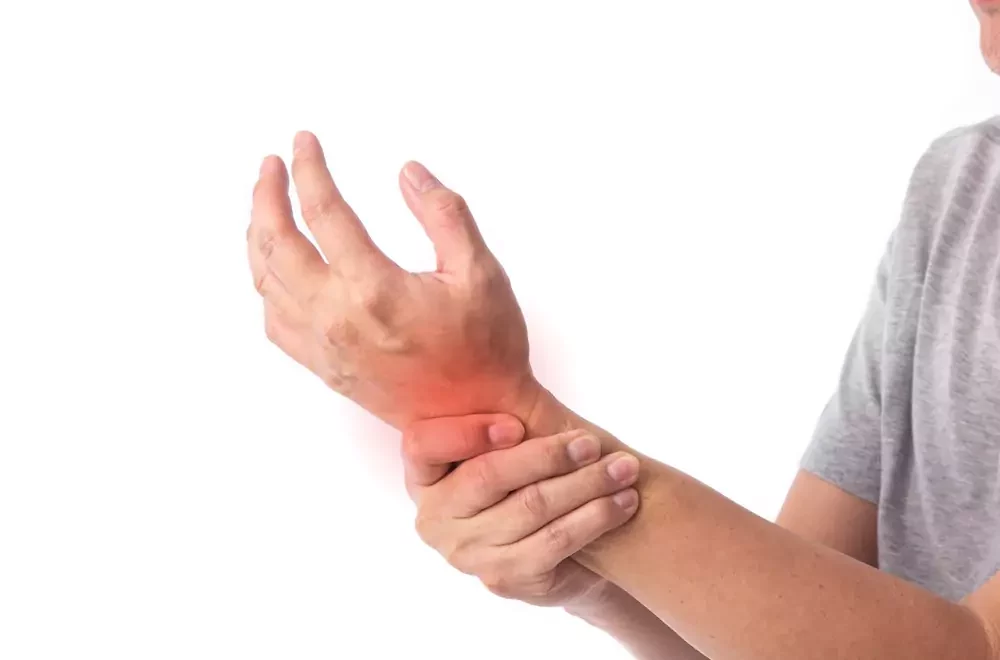
Man holding his wrist in pain, signifying joint pain from arthritis
Before you go ahead and purchase a Vibration Plate, here’s a checklist to help you settle on the most appropriate one:
|
Must-Have |
Why It Matters |
|---|---|
|
Adjustable Frequency & Intensity |
For pain management without overloading joints. |
|
Sturdy, Low-Impact Platform |
Protects joints while being effective. |
|
User Weight Capacity |
For safety and durability. |
|
Ease of Use & Connectivity |
For easy setup, monitoring, and adjusting sessions. |
Yes!
Research shows Vibration Therapy can ease pain.
The vibration wakes up your muscles and gets your blood flowing, which helps calm irritated nerves and keeps your joints moving better.
With consistent practice you will experience less pain and stiffness, making everyday tasks feel a whole lot easier.
Vibration Plates are generally safe for most people, but if you have a knee replacement or other metal implants, you may need to take special precautions.
It’s always best to check with your doctor before starting any new treatment.
Give or take about 6 to 12 weeks, as indicated by most studies.
However, it all ties down to your routine and consistency.
You may start to feel a subtle decrease in stiffness or an improvement in balance much sooner, but long-term benefits, such as increased muscle strength and pain reduction, take a bit longer.
No, WBV isn’t a replacement for physiotherapy; it works best alongside it.
Think of WBV as an accelerator, giving your regular physical therapy a helpful boost.
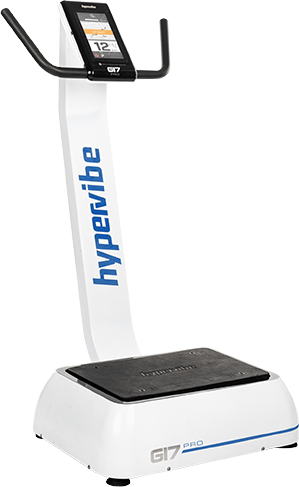




Here’s what to remember from everything we covered:
We’ve put together a simple, structured plan to help you start safely.
Download the 8-Week Arthritis WBV Plan (Free PDF), and start healing your joints one step at a time.
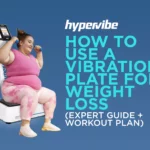
Here’s how we use a vibration plate for weight loss...
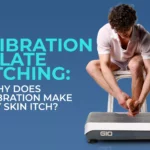
Many people, especially beginners, notice an itchy or tingling “pins-and-needles”...

Taking into consideration the growing popularity of the vibration plate,...

The lymphatic system, also called the lymphoid system, is an...
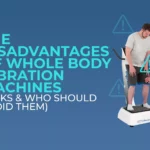
Are vibration machines bad for you? Yes, if used incorrectly....